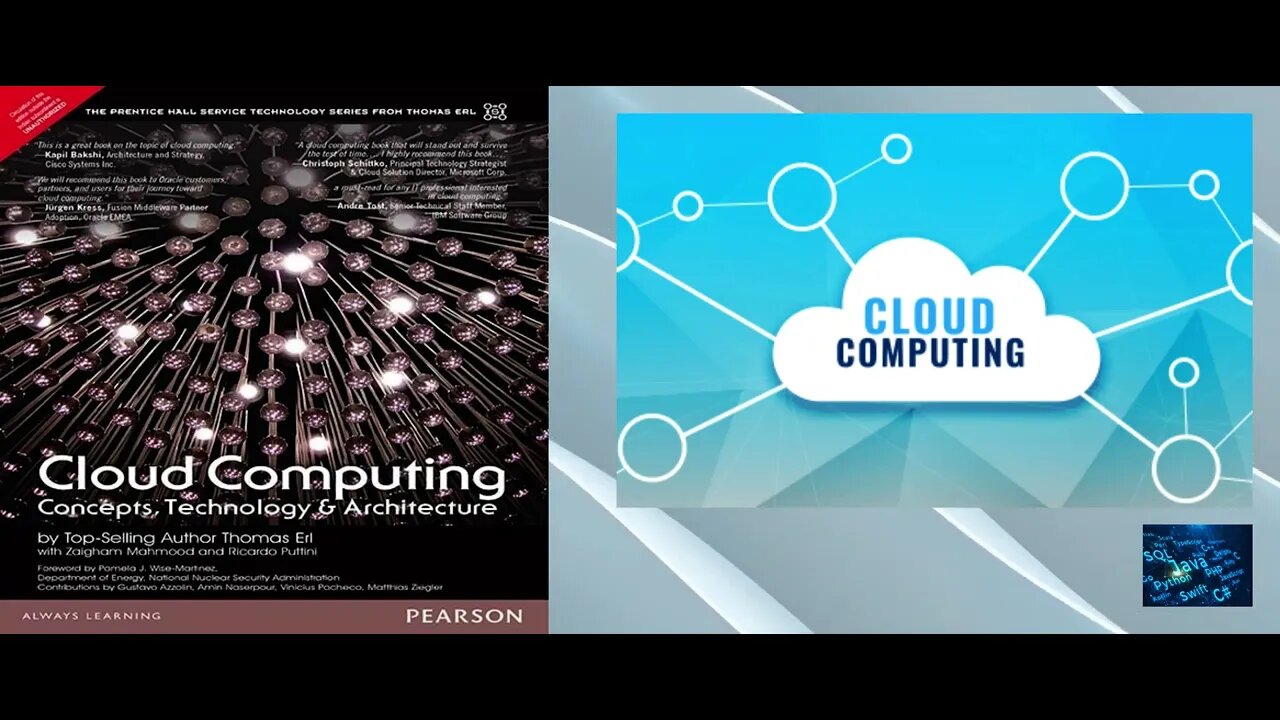Premium Only Content

Cloud Computing: Concepts, Technology & Architecture
You Tube:- https://www.youtube.com/@programmingbookpdf
Linkedin:- https://www.linkedin.com/in/meet-mangukiya-3350a11b6
Website:-https://www.programmingbookspdf.com/
Linktree:- https://linktr.ee/meet.mangukiya2004
Instagram:- https://www.instagram.com/meet.mangukiy/
Telegram:- https://t.me/ProgrammingBookPdf
Clouds are distributed technology platforms that leverage sophisticated technology innovations to provide highly scalable and resilient environments that can be remotely utilized by organizations in a multitude of powerful ways. To successfully build upon, integrate with, or even create a cloud environment requires an understanding of its common inner mechanics, architectural layers, and models, as well as an understanding of the business and economic factors that result from the adoption and real-world use of cloud-based services.
In Cloud Computing: Concepts, Technology & Architecture, Thomas Erl, one of the world’s top-selling IT authors, teams up with cloud computing experts and researchers to break down proven and mature cloud computing technologies and practices into a series of well-defined concepts, models, technology mechanisms, and technology architectures, all from an industry-centric and vendor-neutral point of view. In doing so, the book establishes concrete, academic coverage with a focus on structure, clarity, and well-defined building blocks for mainstream cloud computing platforms and solutions.
Subsequent to technology-centric coverage, the book proceeds to establish business-centric models and metrics that allow for the financial assessment of cloud-based IT resources and their comparison to those hosted on traditional IT enterprise premises. Also provided are templates and formulas for calculating SLA-related quality-of-service values and numerous explorations of the SaaS, PaaS, and IaaS delivery models.
The idea of cloud computing isn’t new, or overly complicated from a technology resources and internetworking perspective. What’s new is the growth and maturity of cloud computing methods, and strategies that enable the goals of business agility. Looking back, the phrase “utility computing” didn’t captivate or create the stir in the information industry as the term “cloud computing” has in recent years. Nevertheless, appreciation of readily available resources has arrived and the utilitarian or servicing features are what are at the heart of outsourcing the access of information technology resources and services. In this light, cloud computing represents a fl exible, cost- effective, and proven delivery platform for business and consumer information services over the Internet. Cloud computing has become an industry game changer as businesses and information technology leaders realize the potential in combining and sharing computing resources as opposed to building and maintaining them. There’s seemingly no shortage of views regarding the benefi ts of cloud computing nor is there a shortage of vendors willing to offer services in either open source or promising commercial solutions. Beyond the hype, there are many aspects of the cloud that have earned new consideration due to their increased service capability and potential effi ciencies. The ability to demonstrate transforming results in cloud computing to resolve traditional business problems using information technology management best practices now exists. In the case of economic impacts, the principle of pay-as-you-go and computer agnostic services are concepts ready for prime time. We can measure performance as well as calculate the economic and environmental effects of cloud computing today.
#tubebuddy
#Keywordtool
#vidiq
#youtubeautosuggest
#googletrends
#KeywordKeg
#keywordseverywhere
-

The Quartering
1 hour agoBen Shapiro Vs Tucker Carlson, Blackface Trick Works, Kash Patel Under Fire, Based Woman Vs Trans
18.1K5 -
 1:24:44
1:24:44
DeVory Darkins
2 hours agoTrump dominates 60 minutes interview as Democrats surrender to Mamdani
83.9K28 -
 LIVE
LIVE
Dr Disrespect
4 hours ago🔴LIVE - DR DISRESPECT - ARC RAIDERS - FULL SEND INTO THE RED
1,606 watching -
 1:50:43
1:50:43
Tucker Carlson
2 hours agoChris Williamson’s Advice to Men: How to Survive a World of OnlyFans and AI Girlfriends
32.3K36 -
 19:57
19:57
Neil McCoy-Ward
7 hours agoThinking Of Relocating? (You'd Better Act FAST! 🚨)
6684 -
 LIVE
LIVE
Jeff Ahern
46 minutes agoMonday Madness with Jeff Ahern
60 watching -
 1:07:25
1:07:25
Timcast
3 hours agoBomb DETONATED At Harvard, Attacks On Ice Agents SKYROCKET
149K126 -
 1:55:31
1:55:31
Steven Crowder
5 hours agoTucker Carlson & MAGA: Everyone is Missing the Point
377K299 -
 1:11:22
1:11:22
The Rubin Report
4 hours agoWatch Joe Rogan’s Face as Elon Musk Exposes How Dems Are Cheating in Plain Sight
62.1K83 -
 1:01:07
1:01:07
VINCE
6 hours agoThe Walls Are Closing In On The Deep State | Episode 160 - 11/03/25
245K152